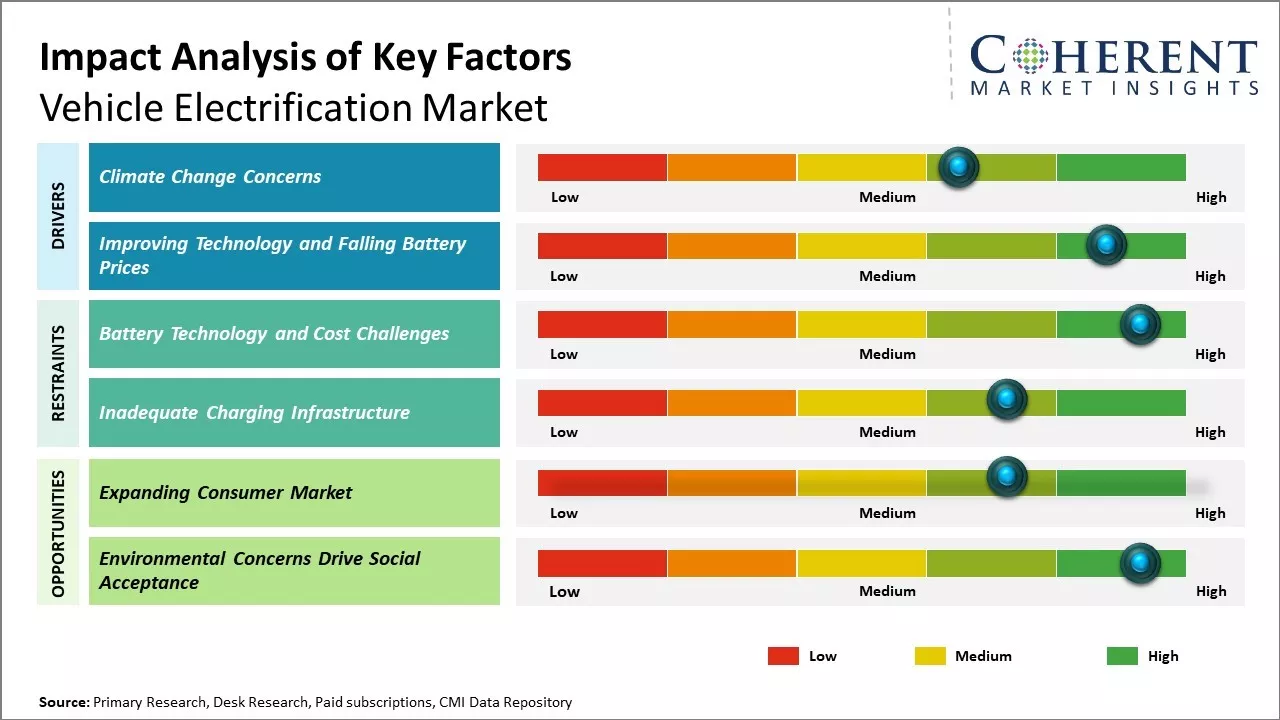The Vehicle Electrification Market is estimated to be valued at USD 122.98 billion in 2025 and is expected to reach USD 255.48 Billion by 2032, exhibiting a compound annual growth rate (CAGR) of 11.0% from 2025 to 2032.

To learn more about this report, Request sample copy
Government mandates for electric vehicles along with consumer shift in preferences towards sustainable mobility are expected to drive the industry's growth over the next decade.
Countries like China, the U.S., and Germany have announced plans to incentivize sales and production of EVs. Many automakers are investing heavily in developing EV technology to capture this growing market. Furthermore, decline in battery prices is making electric vehicles more affordable and accessible to masses. Several nations are also simultaneously working to setup adequate public charging infrastructure to alleviate range anxiety among customers and boost electric vehicle adoption rates. With existing tailwinds, the vehicle electrification market is well positioned for robust expansion in the coming years.
Climate Change Concerns
Government policies and regulations regarding vehicular emissions have become stricter over the years with growing climate change concerns. Transportation accounts for a major portion of global greenhouse gas emissions and there is a pressing need to reduce the carbon footprint of passenger and commercial vehicles. Electrified powertrains such as hybrids, plug-in hybrids, and battery electric vehicles generate fewer emissions over their lifecycle compared to conventional internal combustion engine vehicles. Major economies around the world have outlined ambitious targets to curb emissions and have introduced incentives and subsidies to promote the adoption of electric vehicles. Customers are also gradually becoming more environmentally conscious and are willing to pay more for electric vehicles considering the long-term benefits. The automotive industry is actively working to develop affordable electric vehicles with an improved driving range. Meanwhile governments are investing heavily in public charging infrastructure to allay range anxiety issues. All these factors are expected to significantly drive-up demand for electric vehicles in the coming years as countries aim to meet their emissions goals.
For instance, in July 2021, Suzuki Motor Corporation a Japanese multinational mobility manufacturer and Daihatsu Motor Co., Ltd. a Japanese internal combustion engine manufacturer. collaborated on commercial vehicles to advance carbon neutrality initiatives in the mini-vehicle sector. Their joint effort focuses on promoting the adoption of CASE technologies and services, expediting the electrification of mini-vehicles and fostering positive changes in the automotive industry.
Joining thousands of companies around the world committed to making the Excellent Business Solutions.
View All Our Clients